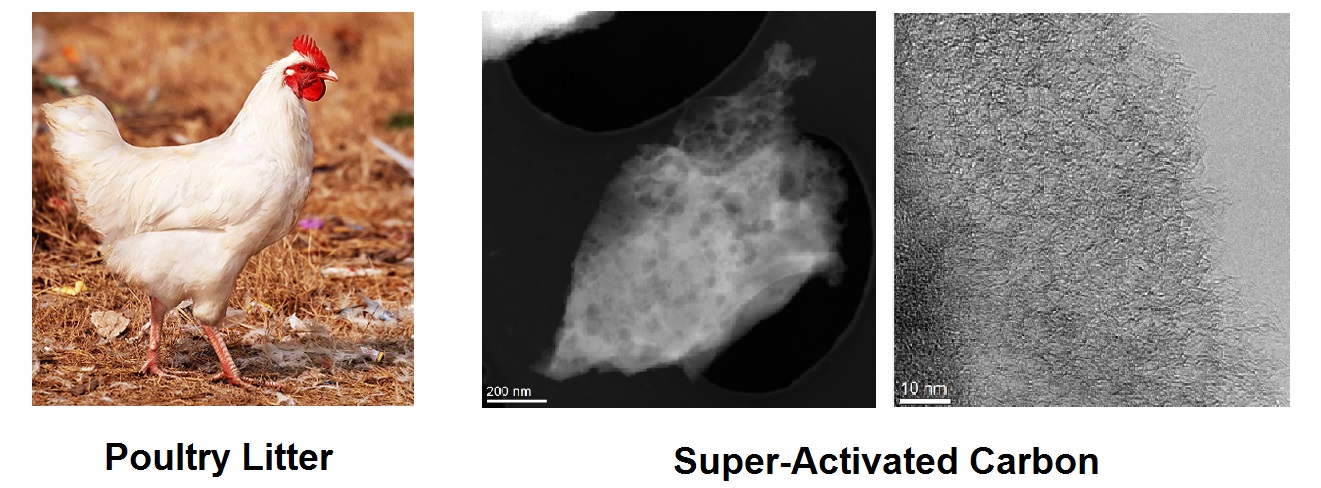
We report on the preparation of a novel hierarchically-porous super-activated carbon originating from organic waste with specific surface area exceeding 3000 m2/g, obtained starting from biochar derived by the pyrolysis of poultry litter. The chemical activation process proved to be efficient to remove the majority of impurities other than carbon, stabilizing a highly porous hierarchical structure with local graphene-like morphology. The presence of P and S with concentration below 0.1 wt% distinguishes this activated carbon from the usual ones obtained from vegetal sources. Thanks to these features, the obtained porous compound demonstrated to behave as an excellent electrode material for high-performance symmetric supercapacitors, reaching high specific capacitance up to 229 (13) F/g. Remarkably, the devices also supply high current density of 10 A/g without using any conducting additives and display high power density and reliability. Moreover, these optimal performances have been obtained operating by using simple eco-friendly electrolytes, like KOH and Na2SO4 aqueous solutions. The availability, the biocompatibility and the inexpensiveness of the starting materials, together with the low environmental impact of the electrolyte, suggest possible large-scale applications for such devices, for example in the field of transportation or in renewable energy-grids, but also in the field of bio-medicine.
Reproduced with permission. Copyright 2019, Elsevier
